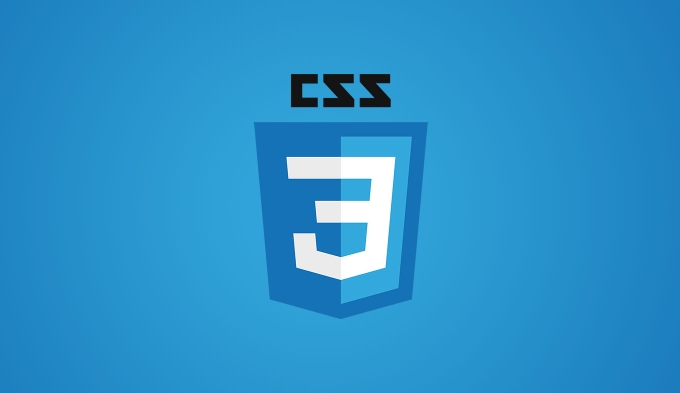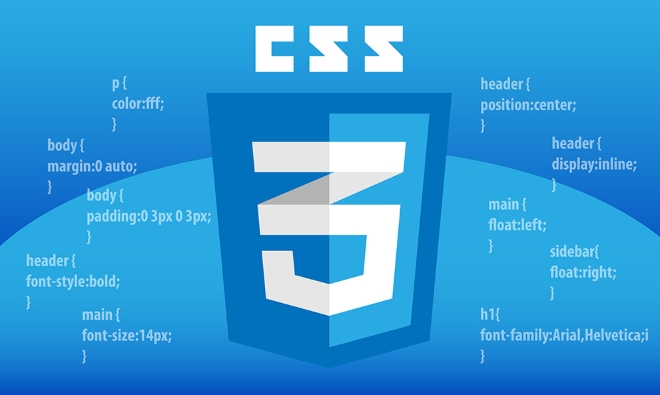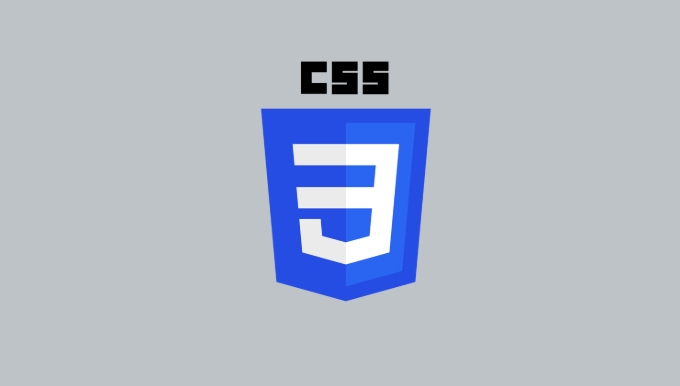CSS Blend Modes realizes color fusion between elements through mix-blend-mode and background-blend-mode attributes to enhance visual hierarchy. 1. mix-blend-mode controls the mixing method of elements and the content below; 2. background-blend-mode controls the mixing between multiple background layers; 3. Common modes such as multiply, screen, and overlay can be used for background overlay, text effects and card light and shadow effects; 4. Pay attention to compatibility, performance impact, color control and hierarchical structure issues when using it.

CSS Blend Modes is a tool that makes web design more creative, especially suitable for creating interfaces with rich visual layers and unique styles. They act like a blending mode in Photoshop, allowing elements to "fusion" in different ways rather than simply overwriting or overlaying.

If you want to add some visual impact when doing background layers, card components, or text effects, Blend Modes will be a good choice.

How to use CSS Blend Mode
CSS provides mix-blend-mode and background-blend-mode properties to control mixed behavior.
-
mix-blend-mode: Used to control how an element is mixed with its content below. -
background-blend-mode: Used to control how multiple background layers of an element are blended.
The basic writing method is as follows:

.element {
mix-blend-mode: multiply;
}or:
.background-element {
background-image: url(image1.jpg), url(image2.jpg);
background-blend-mode: screen;
} Common blend mode types include normal , multiply , screen , overlay , darken , lighten etc. Each mode handles colors differently and has very different effects.
Common usage and design scenarios
Background Image Overlays
When you have an image as the background and want to add a layer of gradient or color mask on it, you can use background-blend-mode to achieve a soft transition.
For example:
.overlay-box {
width: 100%;
height: 300px;
background-image: linear-gradient(to bottom, rgba(255, 0, 0, 0.5), rgba(0, 0, 255, 0.5)), url(background.jpg);
background-blend-mode: overlay;
}This method is very suitable for the hero area of ??the website, making the picture more layered while maintaining the text readability.
Text on Backgrounds
Use mix-blend-mode to allow text to automatically adjust the display effect according to the color of the background below. For example, set the text to white and add mix-blend-mode: difference; , the text will brighten on a dark background and dark on a light background.
.blend-text {
color: white;
mix-blend-mode: difference;
}This technique is often used in art pages or title animations, and the visual effect is very eye-catching.
Light and shadow effects in card components
If you are doing a card layout and want it to look more textured, you can use a translucent mask layer with multiply or screen mode to simulate shadows or highlights.
For example:
.card {
position: relative;
}
.card::after {
content: '';
position: absolute;
top: 0;
left: 0;
width: 100%;
height: 100%;
background: radial-gradient(circle at center, rgba(255,255,255,0.4), transparent 70%);
mix-blend-mode: multiply;
}This will make the center of the card a bit similar to the spotlight and enhance the sense of interaction.
Notes and FAQs
- Compatibility : Blend modes are generally supported by modern browsers, but may be completely invalid in older browsers such as IE. If the project needs to be compatible with old systems, it is best to have a fallback solution.
- Performance Impact : Overuse of blend mode can cause a rendering burden, especially in a large number of dynamic elements.
- Color control : The effect of blend mode is greatly affected by the colors of the upper and lower layers. It is recommended to try several color combinations during debugging.
- Hierarchy : When using
mix-blend-mode, it will affect the way the element and all its child elements are mixed with the content behind it. Pay attention to check whether it affects other parts.
Basically that's it. CSS Blend Modes are not complicated but easy to ignore. After mastering several common modes, you can add many highlights to your daily design.
The above is the detailed content of Working with CSS Blend Modes for creative design. For more information, please follow other related articles on the PHP Chinese website!

Hot AI Tools

Undress AI Tool
Undress images for free

Undresser.AI Undress
AI-powered app for creating realistic nude photos

AI Clothes Remover
Online AI tool for removing clothes from photos.

Clothoff.io
AI clothes remover

Video Face Swap
Swap faces in any video effortlessly with our completely free AI face swap tool!

Hot Article

Hot Tools

Notepad++7.3.1
Easy-to-use and free code editor

SublimeText3 Chinese version
Chinese version, very easy to use

Zend Studio 13.0.1
Powerful PHP integrated development environment

Dreamweaver CS6
Visual web development tools

SublimeText3 Mac version
God-level code editing software (SublimeText3)

Hot Topics
 What is Autoprefixer and how does it work?
Jul 02, 2025 am 01:15 AM
What is Autoprefixer and how does it work?
Jul 02, 2025 am 01:15 AM
Autoprefixer is a tool that automatically adds vendor prefixes to CSS attributes based on the target browser scope. 1. It solves the problem of manually maintaining prefixes with errors; 2. Work through the PostCSS plug-in form, parse CSS, analyze attributes that need to be prefixed, and generate code according to configuration; 3. The usage steps include installing plug-ins, setting browserslist, and enabling them in the build process; 4. Notes include not manually adding prefixes, keeping configuration updates, prefixes not all attributes, and it is recommended to use them with the preprocessor.
 CSS tutorial for creating a sticky header or footer
Jul 02, 2025 am 01:04 AM
CSS tutorial for creating a sticky header or footer
Jul 02, 2025 am 01:04 AM
TocreatestickyheadersandfooterswithCSS,useposition:stickyforheaderswithtopvalueandz-index,ensuringparentcontainersdon’trestrictit.1.Forstickyheaders:setposition:sticky,top:0,z-index,andbackgroundcolor.2.Forstickyfooters,betteruseposition:fixedwithbot
 CSS tutorial for creating loading spinners and animations
Jul 07, 2025 am 12:07 AM
CSS tutorial for creating loading spinners and animations
Jul 07, 2025 am 12:07 AM
There are three ways to create a CSS loading rotator: 1. Use the basic rotator of borders to achieve simple animation through HTML and CSS; 2. Use a custom rotator of multiple points to achieve the jump effect through different delay times; 3. Add a rotator in the button and switch classes through JavaScript to display the loading status. Each approach emphasizes the importance of design details such as color, size, accessibility and performance optimization to enhance the user experience.
 CSS tutorial focusing on mobile-first design
Jul 02, 2025 am 12:52 AM
CSS tutorial focusing on mobile-first design
Jul 02, 2025 am 12:52 AM
Mobile-firstCSSdesignrequiressettingtheviewportmetatag,usingrelativeunits,stylingfromsmallscreensup,optimizingtypographyandtouchtargets.First,addtocontrolscaling.Second,use%,em,orreminsteadofpixelsforflexiblelayouts.Third,writebasestylesformobile,the
 How to create an intrinsically responsive grid layout?
Jul 02, 2025 am 01:19 AM
How to create an intrinsically responsive grid layout?
Jul 02, 2025 am 01:19 AM
To create an intrinsic responsive grid layout, the core method is to use CSSGrid's repeat(auto-fit,minmax()) mode; 1. Set grid-template-columns:repeat(auto-fit,minmax(200px,1fr)) to let the browser automatically adjust the number of columns and limit the minimum and maximum widths of each column; 2. Use gap to control grid spacing; 3. The container should be set to relative units such as width:100%, and use box-sizing:border-box to avoid width calculation errors and center them with margin:auto; 4. Optionally set the row height and content alignment to improve visual consistency, such as row
 How to center an entire grid within the viewport?
Jul 02, 2025 am 12:53 AM
How to center an entire grid within the viewport?
Jul 02, 2025 am 12:53 AM
To make the entire grid layout centered in the viewport, it can be achieved by the following methods: 1. Use margin:0auto to achieve horizontal centering, and the container needs to be set to set the fixed width, which is suitable for fixed layout; 2. Use Flexbox to set the justify-content and align-items properties in the outer container, and combine min-height:100vh to achieve vertical and horizontal centering, which is suitable for full-screen display scenarios; 3. Use CSSGrid's place-items property to quickly center on the parent container, which is simple and has good support from modern browsers, and at the same time, it is necessary to ensure that the parent container has sufficient height. Each method has applicable scenarios and restrictions, just choose the appropriate solution according to actual needs.
 What is feature detection in CSS using @supports?
Jul 02, 2025 am 01:14 AM
What is feature detection in CSS using @supports?
Jul 02, 2025 am 01:14 AM
FeaturedetectioninCSSusing@supportschecksifabrowsersupportsaspecificfeaturebeforeapplyingrelatedstyles.1.ItusesconditionalCSSblocksbasedonproperty-valuepairs,suchas@supports(display:grid).2.Thismethodensuresfuturecompatibilityandavoidsrelianceonunrel
 Addressing CSS Browser Compatibility issues and prefixes
Jul 07, 2025 am 01:44 AM
Addressing CSS Browser Compatibility issues and prefixes
Jul 07, 2025 am 01:44 AM
To deal with CSS browser compatibility and prefix issues, you need to understand the differences in browser support and use vendor prefixes reasonably. 1. Understand common problems such as Flexbox and Grid support, position:sticky invalid, and animation performance is different; 2. Check CanIuse confirmation feature support status; 3. Correctly use -webkit-, -moz-, -ms-, -o- and other manufacturer prefixes; 4. It is recommended to use Autoprefixer to automatically add prefixes; 5. Install PostCSS and configure browserslist to specify the target browser; 6. Automatically handle compatibility during construction; 7. Modernizr detection features can be used for old projects; 8. No need to pursue consistency of all browsers,






